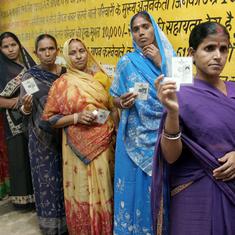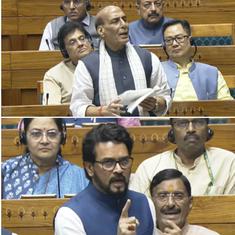Since then, opinion polls related to the Indian elections have had mixed results: some have been rather accurate, but others have been wayward.
The last two elections saw a few major failures. In 2004, both opinion and exit polls predicted a win for the Bharatiya Janata Party-led National Democratic Alliance, but the result was a convincing victory for Congress-led United Progressive Alliance. In 2009, most opinion and exit polls predicted a hung parliament, but the Congress emerged as the biggest party with over 200 seats and formed a stable government on its own.
This election season, the bulk of 80 political parties in their feedback to the Election Commission sought a ban on opinion polls. The commission told the Centre to ban them from the date the elections were notified. The demand for restrictions on opinion polls was not being raised for the first time. In 1997, all political parties had asked for them to be banned. Political parties repeated the demand in 1998, 2004 and 2010.
The opinion poll that predicted the results most closely was NDTV-Hansa, with 275 seats for the NDA combine. All the polls universally predicted a much better performance for the UPA, estimating between 92-117 seats for it.

In terms of vote share, India Today and ABP-Nielson predicted an exact 23% vote share for the UPA. India Today and NDTV were close in predicting NDA’s vote share as well, as the visualisation below shows.

Like opinion polls, exit polls conducted on voters leaving the booths have not been free of controversy either. Section 126 A of the Representation of the People Act prohibits the “publication and dissemination of results of exit poll”. It states that “no person shall conduct any exit poll and publish or publicise by means of the print or electronic media or disseminate in any other manner, whatsoever the result of any exit poll during such period”. The prohibited period has been defined as the time commencing “from the beginning of the hours fixed for poll on the first day of poll” and continuing “till half an hour after closing of the polling in all the states and union territories”.
But this ban was flouted when certain news channels broadcast what they called “opinion polls” on April 14, even as multi-phase polls were in progress. Certain newspapers have also published the so-called "opinion polls". The EC had to step in and issue a warning.
The six exit polls as shown in the visualisation predicted that the NDA would win between 257 and 340 seats, with a variation of 80 seats between them. The wide variation in numbers led analysts to believe that the exit polls could go wrong this time as well.

Just like the opinion polls, the exit polls also predicted a respectable for the Congress, somewhere between 97-135 seats and a BJP performance in the range of 257-289. The only exception was the Chanakya poll, which predicted that BJP would win 291 seats and even allotted a margin of 14 seats. Conducted by a global market research company called RNB Research, the Chanakya poll came closest to predicting the results, winning the battle of the exit polls by a long margin.
Chanakya had similarly predicted a powerful performance for the Aam Aadmi Party in 2013 Delhi assembly elections, at a time when other surveys forecast a poor result for the Arvind Kejriwal-led party.
The following table shows the predictions of all exit polls in all major states and the actual results.

Visualisations: Kaustubh Khare.










